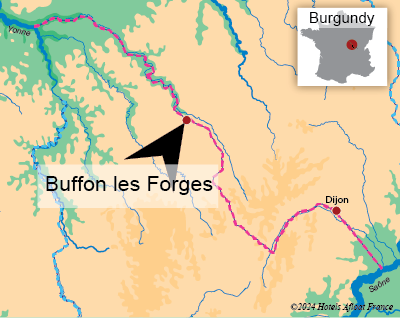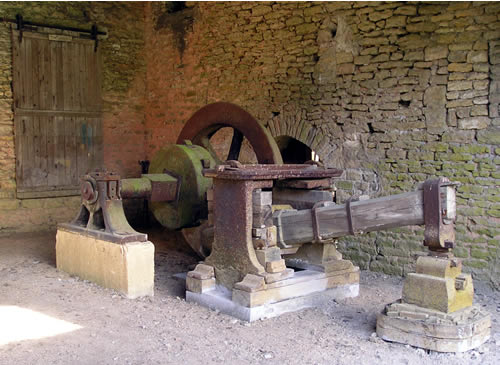The village of Buffon

The village of Buffon is situated on the Yonne side of the canal, downstream and to the north of Montbard, close to the locks 68Y and 69Y.
The canal is agreeable to cruise in this section, with a mixture of wide canal stretches and impressive stone embankments.
Take the time to visit the very old “Forge” constructed by French naturalist Georges-Louis Leclerc, Comte de Buffon. You can moor your boat close to the entrance of the Forge and take a fascinating visit to the historical site.

In the village, alongside the road, there is a cafe restaurant, which is a worthy stop for dinner or lunch.
History & photos of the famous "Grande Forge de Buffon"
The “Grande Forge de Buffon” is a fascinating place to visit, located on the Yonne side of the canal a couple of kilometres from the town of Montbard.
The monument has been restored with so much effort and courage by Mrs Taylor Whitehead over the last couple of decades.
Now open to the public and offering guided tours, you can discover the personality of Buffon and some of his discoveries.
Georges Louis Leclerc Buffon, born a few miles away in the town of Montbard (1707 to 1788), was an expert naturalist and was appointed to the King of France.
Buffon travelled extensively to study minerals, birds, and wildlife. He published his first volume of the Histoire Naturelle in 1749. In total, he wrote 44 volumes and is renowned as the father of Natural History, laying the foundations for the study of Evolution.
Read the Wiki article the Comte de Buffon
The Forge was built on the banks of the river Armançon in 1768. The water was damned and controlled to power the water mills, which in turn powered blast furnaces. The establishment was years ahead of its time and was an ingredient in marking the beginning of the Industrial Revolution for France.
After severe flooding, the forge was converted into a cement factory and finally ceased activity.

The buildings of the workshops

The watermill was used to power the blower which pumped air into the furnace.

The colossal hammer is powered by a watermill.
Contact the Forge:
21500 BUFFON,
Telephone: 03 80 92 10 35
Website: https://www.grandeforgedebuffon.fr/
